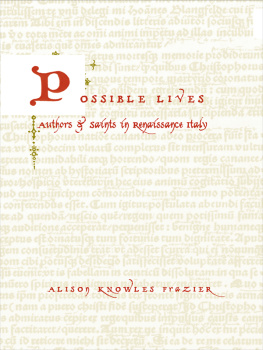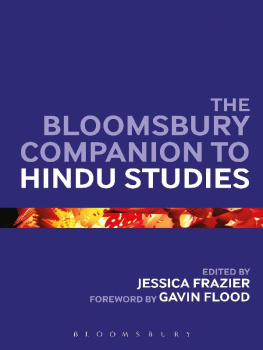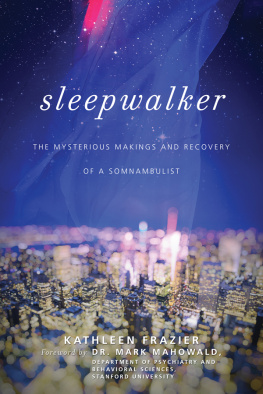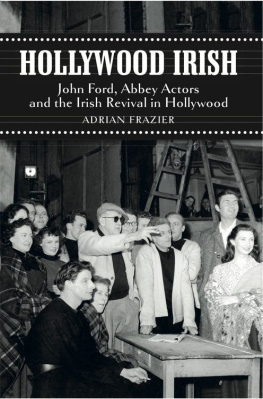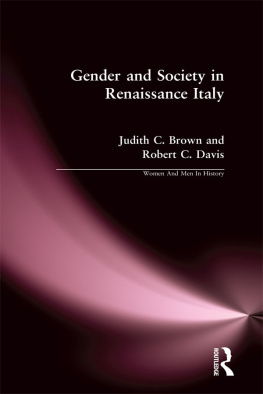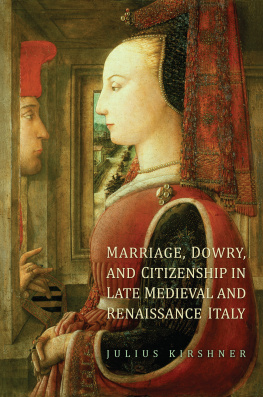Frazier - Possible lives: authors and saints in Renaissance Italy
Here you can read online Frazier - Possible lives: authors and saints in Renaissance Italy full text of the book (entire story) in english for free. Download pdf and epub, get meaning, cover and reviews about this ebook. City: Italy, year: 2005;2011, publisher: Columbia University Press, genre: Religion. Description of the work, (preface) as well as reviews are available. Best literature library LitArk.com created for fans of good reading and offers a wide selection of genres:
Romance novel
Science fiction
Adventure
Detective
Science
History
Home and family
Prose
Art
Politics
Computer
Non-fiction
Religion
Business
Children
Humor
Choose a favorite category and find really read worthwhile books. Enjoy immersion in the world of imagination, feel the emotions of the characters or learn something new for yourself, make an fascinating discovery.
- Book:Possible lives: authors and saints in Renaissance Italy
- Author:
- Publisher:Columbia University Press
- Genre:
- Year:2005;2011
- City:Italy
- Rating:4 / 5
- Favourites:Add to favourites
- Your mark:
- 80
- 1
- 2
- 3
- 4
- 5
Possible lives: authors and saints in Renaissance Italy: summary, description and annotation
We offer to read an annotation, description, summary or preface (depends on what the author of the book "Possible lives: authors and saints in Renaissance Italy" wrote himself). If you haven't found the necessary information about the book — write in the comments, we will try to find it.
Frazier: author's other books
Who wrote Possible lives: authors and saints in Renaissance Italy? Find out the surname, the name of the author of the book and a list of all author's works by series.
Possible lives: authors and saints in Renaissance Italy — read online for free the complete book (whole text) full work
Below is the text of the book, divided by pages. System saving the place of the last page read, allows you to conveniently read the book "Possible lives: authors and saints in Renaissance Italy" online for free, without having to search again every time where you left off. Put a bookmark, and you can go to the page where you finished reading at any time.
Font size:
Interval:
Bookmark:
Possible Lives
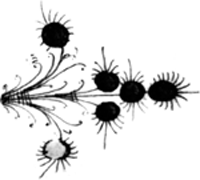
Possible Lives
Authors and Saints in Renaissance Italy
ALISON KNOWLES FRAZIER
Columbia University PressNew York
Columbia University Press
Publishers Since 1893
New York Chichester, West Sussex
cup.columbia.edu
Copyright 2005 Columbia University Press
All rights reserved
E-ISBN 978-0-231-50339-6
Columbia University Press expresses appreciation for
a University Cooperative Society Subvention Grant
awarded by the University of Texas at Austin that
helped with publication.
Columbia University Press also expresses appreciation
for a grant from the Gladys Krieble Delmas Foundation
to assist with the production of this book.
Library of Congress Cataloging-in-Publication Data
Frazier, Alison Knowles
Possible lives : authors and saints in Renaissance Italy /
Alison Knowles Frazier.
p. cm.
Includes bibliographical references and index.
ISBN 0231129769 (cloth : alk. paper)
1. Christian hagiographyhistoryTo 1500.
2. Christian literature, Latin (Medieval and modern)ItalyHistory and criticism. 3. RenaissanceItaly. I. Title.
BX4662.F74 2004
235'.2'094509024dc22
2004050215
A Columbia University Press E-book.
CUP would be pleased to hear about your reading experience with this e-book at .
for
Dorothy and Ray,
and
Rufus and Helen,
with love

Table of Contents
:

Possible Lives began with a visit, more than a decade ago, to the Manhattan apartment of Paul Oskar Kristeller. As we sat at a small table, surrounded by books and papers and card files, Kristeller described from memory more than a dozen manuscripts and fonds that I should examine and suggested connections between certain authors. Keep a card file, he urged, and cross-reference everything. Kristeller then dropped the bombshell: he had recorded writings about saints in the course of assembling the Iter Italicum but had not been consistent in his attention to this literature. In consequence, he explained, I should repeat his dpouillement of catalogs. My heart sank; anyone who has consulted Kristellers Latin Manuscript Books will know why. It seemed to me that I could write a dissertation or I could undertake to repeat his lifes work for hagiography in manuscript and early printed sources, buteven supported by the Bollandists catalogsI could not do both. To calm my anxiety, I focused on taking notes. Kristellers eyebrows rose as I began: the writing implement to hand in my bag was a pen with green ink.
Those mortifyingly green notes traveled with me for years, a practical reminder of tasks and a conceptual map. Id long since transferred their contents to index cards and then to computer files, but a talismanic quality now attached to them. They reminded me of the elderly scholar, of his enthusiasm for the project of collecting and analyzing the fifteenth-century humanists lives of the saints. By virtue of his attention to the vitae sanctorum by these authors, Kristeller was unusual. But he was almost unique in his attention to their engagement with a chronological range of saints and in his refusal to dispense with even the most derivative of their contributions. All would be evidence for the reassembly of a forgotten moment in the cult of the saints and in the history of the studia humanitatis.
That visit was the only time Kristeller and I talked face to face about the topic of humanist hagiography. It was easy to convince myself not to bother him: he had the magnum opus of the Iter Italicum under way and was helping many scholars around the world with their projects. Years later, when Kristeller published his article on humanist sources for the supposed child martyr Simon of Trentsurely a model of what he expected from mehe sent a copy. I was surprised and gratified and chastened. We had not been in touch. But the gift of the offprint and the little note that accompanied it showed that he had greater confidence in the significance of the undertaking than I.
This study falls far from what Kristeller would have wished. It incorporates conceptual positions for which he had little patience and does notcould not possiblyrepresent the thorough dpouillement he suggested. But it does attempt to answer wholeheartedly his faith in the multifarious reality of the intellectual moment of humanist hagiography.
If Kristeller is the distant deity of this study, John Monfasani, Eugene F. Rice Jr., and Caroline Walker Bynum are its godparents. To John I owe my first steps in the technical training that lies behind Possible Lives; I hope that the book does not embarrass him. John has read more shaky first and second drafts than anyone, and I thank him for his early encouragement and reliable support.
Gene was still collecting accolades for Saint Jerome in the Renaissance when I arrived at Columbia University. In the wake of that elegant study, of Donald Weinstein and Rudolph Bells innovative Saints and Society, and of Andr Vauchezs magisterial La Saintet en Occident, it was not surprising that he sent me off to investigate humanist participation in the cult of the saints. Saint Jerome, however, set me a problem, for it forced me to confront the bivia: how could I answer, on one hand, Kristellers desire for compendiousness and breadth and, on the other, Genes exemplary close study of humanists responses to one saint?
Caroline Bynum began to shape this study in the course of a year-long seminar on hagiography; I am grateful for her insightful and enthusiastic responses to dissertation chapters and then to book drafts. In a series of conversations, she encouraged me to face the problem of structuring Possible Lives. The answer, I gradually decided, was to embrace the contrast of historiographical styles represented by the work of my two constant mentors, Caroline and John. As a result, the chapters that follow might be described as a social history of intellectuals: they are designed to capture the sheer inventiveness with which humans make and respond to their religious environments and to document in detail the contribution of the studia humanitatis. Such an encounter between what is usually treated as elite history and what is usually treated as popular history is relatively unusual. If it succeeds here, that is in large part due to what I have learned from Caroline.
My third great debt is to librarians. At my home institution, the University of Texas at Austin, the interlibrary loan department headed by Wendy Nesmith, the bibliographers for history and religion, Gera Draaijer and Shiela Winchester, and the rare book librarians of the Harry Ransom Research Center have helped with innumerable requests. The Vatican Microfilm Archive at St. Louis University has been an indispensable support for a scholar so far from Italy. Abroad, I was received kindly by librarians and archivists who arranged lighting, described archival organization and bureaucratic procedures, sorted out confusing shelf marks, and made time and space for me when seats were full. I especially thank the staffs at the American Academy in Rome, directed by Christina Huemer; the Biblioteca Apostolica Vaticana; the Bibliothque nationale and the library of Ste. Genevive in Paris; the British Library and the John Rylands Library; and the staffs of
Next pageFont size:
Interval:
Bookmark:
Similar books «Possible lives: authors and saints in Renaissance Italy»
Look at similar books to Possible lives: authors and saints in Renaissance Italy. We have selected literature similar in name and meaning in the hope of providing readers with more options to find new, interesting, not yet read works.
Discussion, reviews of the book Possible lives: authors and saints in Renaissance Italy and just readers' own opinions. Leave your comments, write what you think about the work, its meaning or the main characters. Specify what exactly you liked and what you didn't like, and why you think so.

